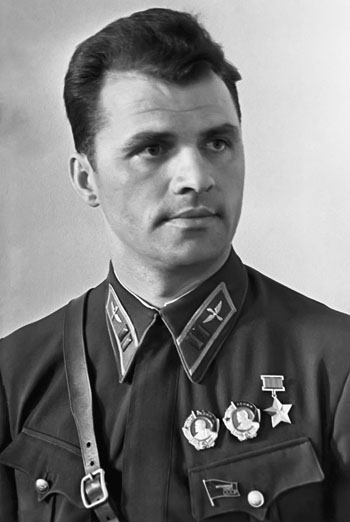
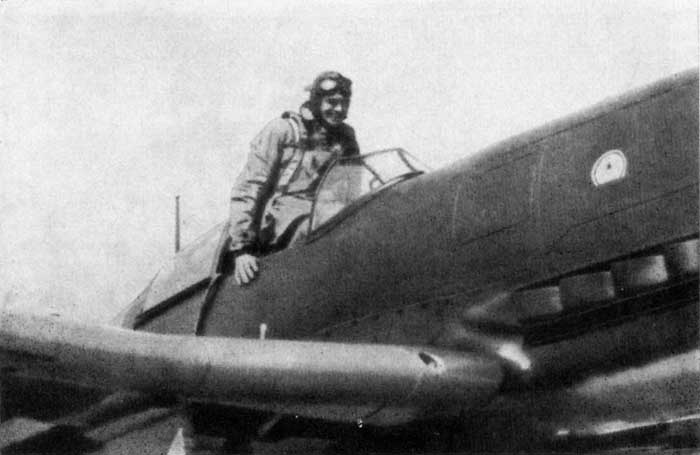
The first commander of the 401 IAP-ON was Lieutenant Colonel Stepan Pavlovich Suprun. He had already some combat experience, having leaded a fighter unit in China in 1940.
The first 12 of 36 MiG-3s of 401 IAP flew to Zubovo airfield, Belarus, on June 27; they were the first modern Soviet fighters in that area, that was covered only by I-153s of 169 IAP.
On the first days, the 401 IAP made missions of recognition and ground attack with FAB-50 bombs and rockets on the German forces quickly advancing on the Minsk–Borisov highway. Despite being a regimental commander, Suprun flew combat sorties, and he scored his first aerial victory on 27 June 1941, a Hs 126 reconnaissance plane. On the following days, more Soviet air units started to operate on that area.
Starting on July 2, German fighters were moved on advanced airports of that area, and 401 IAP had its first losses in air combats.
On 4 July, in the afternoon, Suprun took off with 9 other MiGs of his unit for the third combat flight of that day, escorting bombers of 214th and 213rd SBAP, and this was his last mission. Many versions of it do exist, some of which seem propagandistic creations. According to the most credible reconstruction, Suprun flew higher than the other MiGs and lost contact with them in the cloudy sky. Around 16:00, some German Bf-109F of Group IV./JG 51 were operating in the area, shooting down some SB; Feldwebel Heinz Gerken reported to have shot down a 'ZKB-19' that was likely the MiG-3 of Suprun. No Soviet witnesses were present, and it is not known if this was an epic battle or the Regiment Commander was taken by surprise. Residents of some villages saw a downed plane that landed close to a forest and went on fire, killing its pilot; they recovered documents and a medal that allowed to identify him as Stepan Suprun. After his death, he was awarded the gold star for the second time, making him the first person to become a twice Hero of the Soviet Union during the war.
Left:
Despite the resemblance, the plane appearing on this photo of Suprun is not a MiG-3 but an He-100, bought from Germany before the war outbreak and tested at NII VVS, the Scientific Institute of the Air Force.
Image from http://www.testpilot.ru/memo/40/suprun.htm
https://en.wikipedia.org/wiki/Stepan_Suprun
http://www.testpilot.ru/memo/40/suprun.htm
https://warspot.ru/10007-tyazhyoloe-ispytanie-dlya-ispytateley
White 13-1 of Suprun
Despite the existence of photographic reports on the planes of 401 IAP-ON, there are not available photos of the plane of Suprun, due to his sudden death in combat.
The profile below has been traced on the base of the reconstruction made by M. Bykov, based on a verbal description of veterans of the regiment. http://ava.org.ru/iap/263.htm
The overall livery was the typical prewar one, with AII green uppersurfaces and AII light blue undersurfaces, and small red stars with thin black outline on the fuselage sides, over and below the wings but not on the tail, and shiny propeller with the back faces partially painted back.
All the planes received a white two-digits regimental number, instead of the more typical prewar colored number on the rudder.
In addition to the regimental number 13, the plane of Suprun is said to have had a white 1 painted on the fuselage.
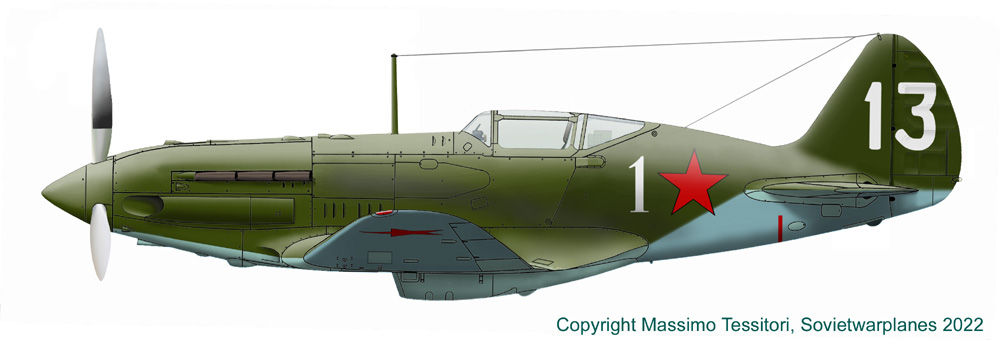
White 17
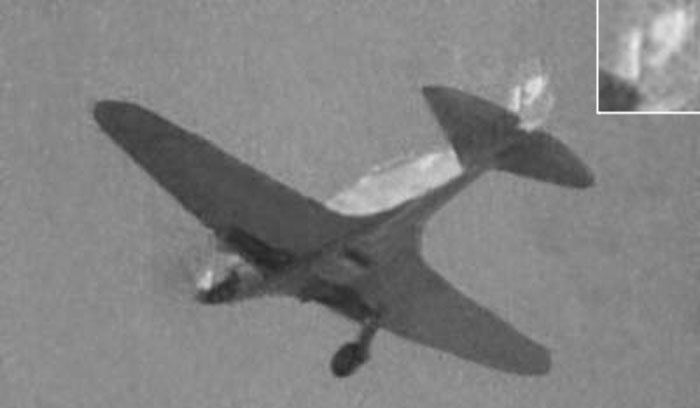
Plane 17 appears on a flight image only. From this photo, the number could also be read as 19, but the top is flat and doesn't resemble to a reversed 6 with the same font as visible on n.36; on the other hand, it doesn't resemble either to the font of the 7 of plane 57 shown below.
The overall livery was the typical prewar one, with gloss AII green uppersurfaces and AII light blue undersurfaces, and small red stars with thin black outline on the fuselage sides, over and below the wings but not on the tail, and shiny propeller with the back faces partially painted back.
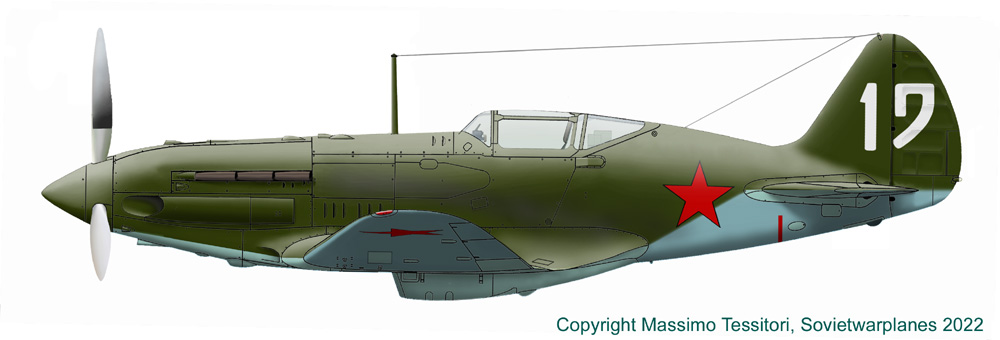
White 36
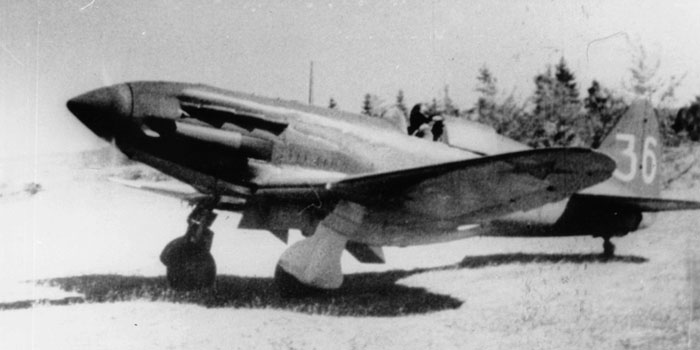
Plane 36 appears on a newsreel. Some sources attribute it to pilot Kubyshkin.
Some of the frames can leave the doubt that the plane could have darker areas painted on, but it could be a joke of shadows and reflections on the glossy surface.
The photo shows the pylons for bombs under the wings, probably common to all the planes of the unit.
The overall livery was the typical prewar one, with AII green uppersurfaces and AII light blue undersurfaces, and small red stars with thin black outline on the fuselage sides, over and below the wings but not on the tail, and shiny propeller with the back faces partially painted back.
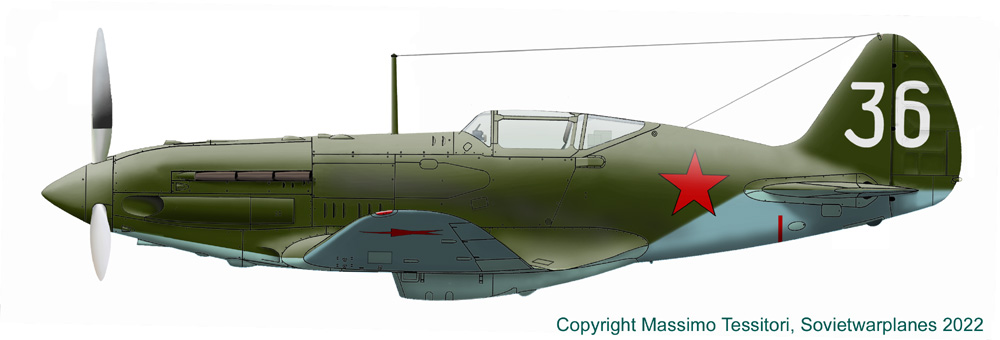
White 40
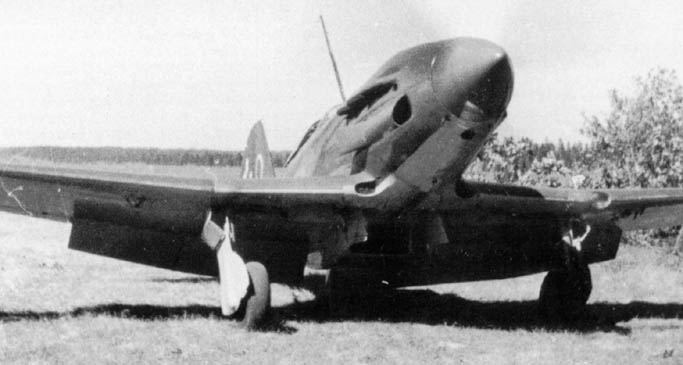
Plane 40 (49?) shows the pylons for bombs under the wings. Images of MiG-3 with this device are common, but photos of MiG-3s with bombs are rare, if any.
The overall livery was the typical prewar one, with AII green uppersurfaces and AII light blue undersurfaces, and small red stars with thin black outline on the fuselage sides, over and below the wings but not on the tail, and shiny propeller with the back faces partially painted back.

White 42
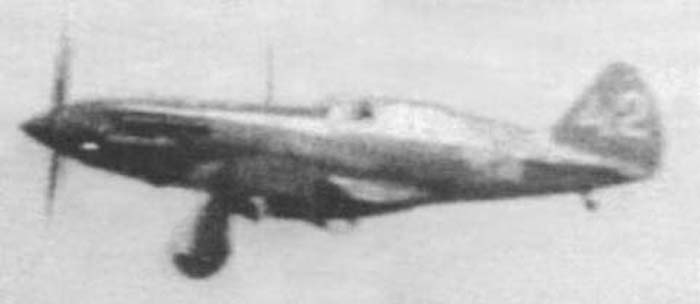
Plane 42 appears on a newsreel while taking off or landing.
The nose can give the impression to be darker than the dominant AII green of the plane, but the dark area on the fuselage side could be a shadow projected by the exhaust fumes.
Apart for the darker nose, the overall livery was the typical prewar one, with gloss AII green uppersurfaces and gloss AII light blue undersurfaces, and small red stars with thin black outline on the fuselage sides, over and below the wings but not on the tail, and shiny propeller with the back faces partially painted back.
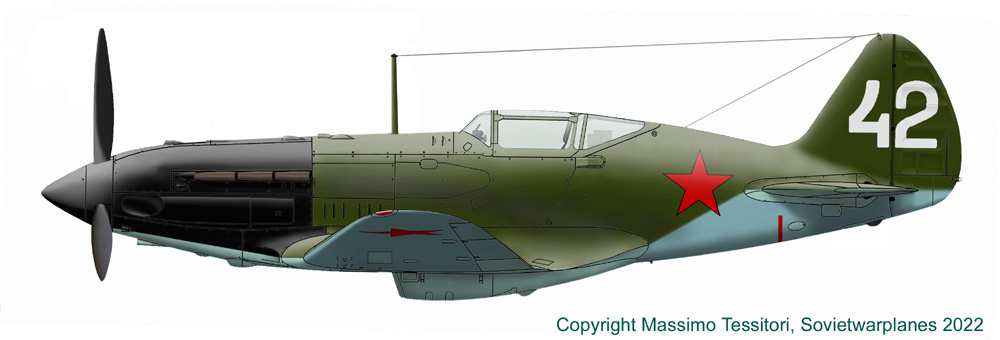
White 43
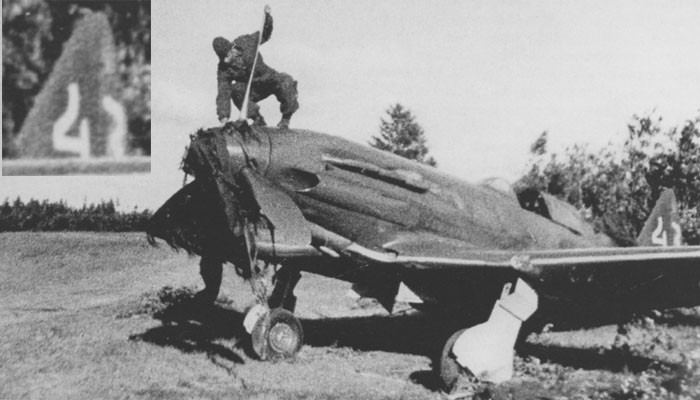
Plane 43 shows the pylons for bombs under the wings. The front of the propeller's blade seems not shining, perhaps the front was repainted green.
The overall livery was the typical prewar one, with AII green uppersurfaces and AII light blue undersurfaces, and small red stars with thin black outline on the fuselage sides, over and below the wings but not on the tail.
Image from Istrebitel MiG-3 of Medved, Kazanov, Maslov
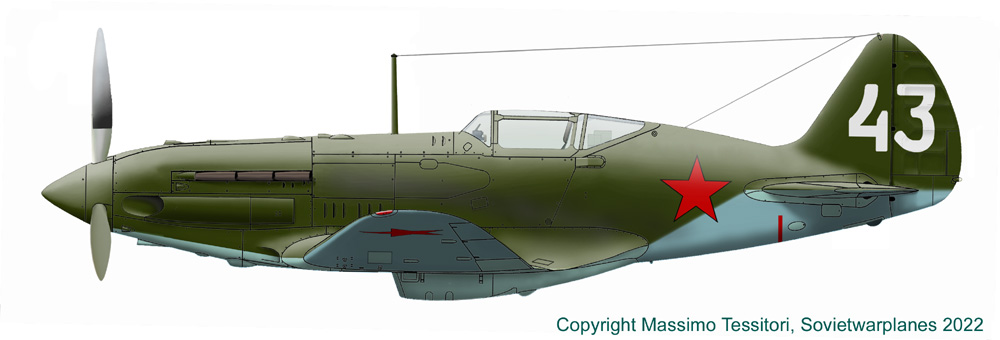
White 57
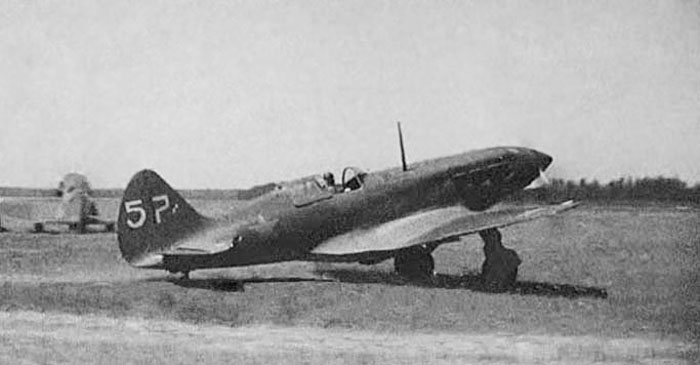
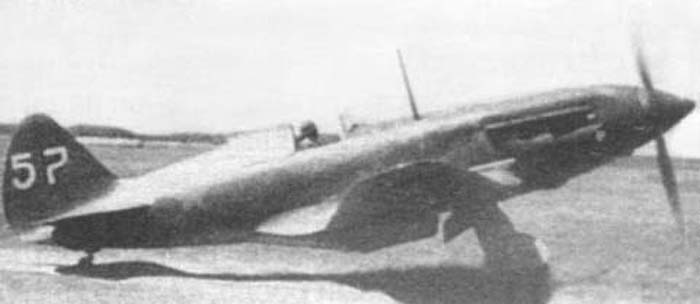
Plane 57 differs from the other known planes of the unit for the smaller and thinner white number on its tail.
The overall livery was the typical prewar one, with AII green uppersurfaces and AII light blue undersurfaces, and small red stars with thin black outline on the fuselage sides, over and below the wings but not on the tail.
This plane shows some fading on the metallic areas that look a bit lighter than the wooden ones; this characteristic probably became more evident with ageing, as visible on the photos of captured and wrecked MiG-3s made by Germans. So, it was not brand new when the photo was taken. It appears in a newsreel and the planes on the background are both with the uniform green livery, both with the black-green camouflage, so one can suspect that the images were taken later, around August when the original stock of planes was reinforced with newly built ones of later standard.
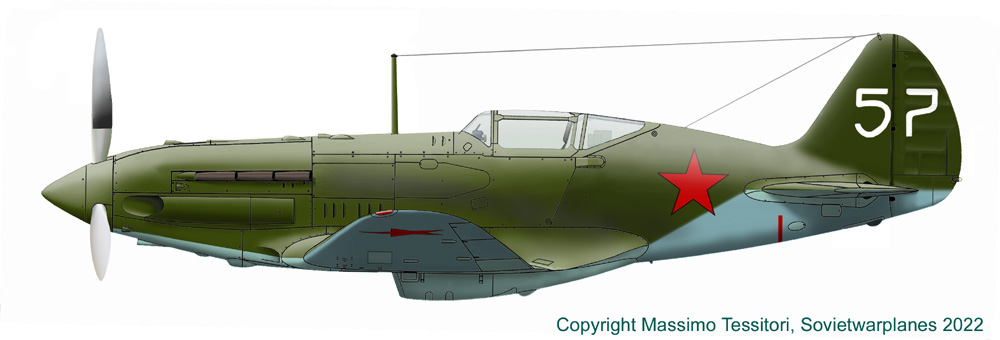
Just after the death of Stepan Suprun, on 5 June, 401 IAP-ON continued the combat operations performing other bombing and escort missions, and suffering further losses: two MiGs were shot down in combat while repelling a raid of two Me-109s on their airfield, one more MiG was destroyed on the ground; two further MiG-3s were lost in a second air combat, without shooting down any Messerschmitt.
On July 6, the Zubovo airfield was raided three times by German bombers and zerstorers, trying to hit the Il-2s of 430 ShAP on the same airfield; one further MiG-3 was lost while taking off to repel the attacks; on that day, and the following one, the most part of the Il-2s were lost or damaged. 401 IAP made sorties for ground attack and reconnaissance, and a further MiG-3 was lost.
On July 7, vice commander Captain Konstantin Kokkinaki landed to Zubovo with some new pilots and planes for 401 IAP-ON. On following days, the unit operated in further sorties both against ground units and planes, claiming some victories but losing 8 planes and 2 pilots.
On July 11, the 401 IAP-ON, still with 11 MiG-3s, flew to the Gorky airfield, and on July 13 to Smolensk, where it was subordinated to the 43rd IAD headquarters. From July 11 to 24, it made 128 sorties, mainly protecting the Gorky and Smolensk airfields. After the loss of five MiG-3s, the regiment left the remaining aircraft to the 23rd SAD units and was sent to the rear for replenishment.
On August 16, 1941, all surviving test pilots were recalled from the front and the unit, with new personnel, was renamed as 263 IAP.
White 15 of Kokkinaki
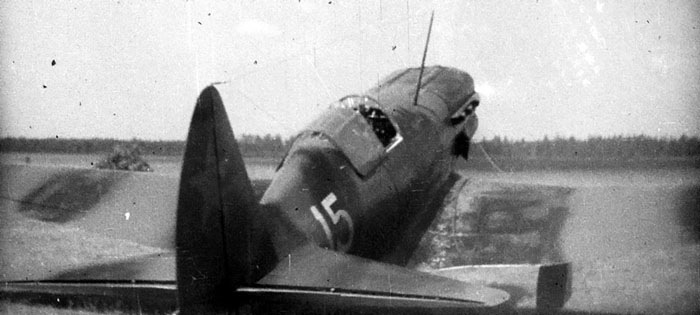
Right: Major Konstantin Konstantinovich Kokkinaki, that was commander of the 401 IAP after the death of Suprun up to the transformation of the unit into 263 IAP and the return of all test pilots to their factories and institutes on 16 August 1941.
Left:
Plane white 15 of Kokkinaki. This plane was a late type MiG-3, just delivered, recognizable for the long blisters of the guns and of the exhaust tubes on the nose, for different elevators and other details.
Anyway, the plane shows also some transitional characteristics and a rough field camouflage; it is not clear if it had slats.
https://en.wikipedia.org/wiki/Konstantin_Kokkinaki
Image from https://kokkinaki.ru/portraits
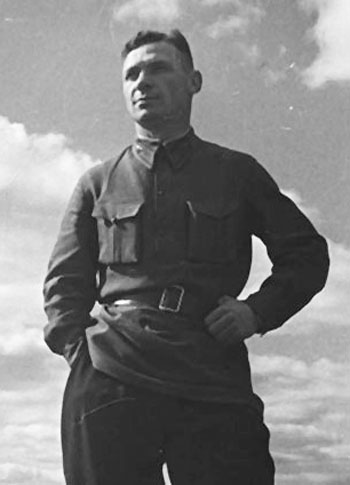
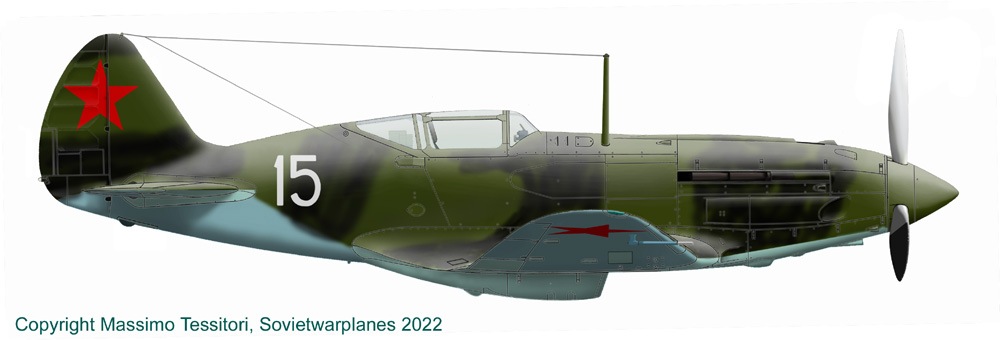
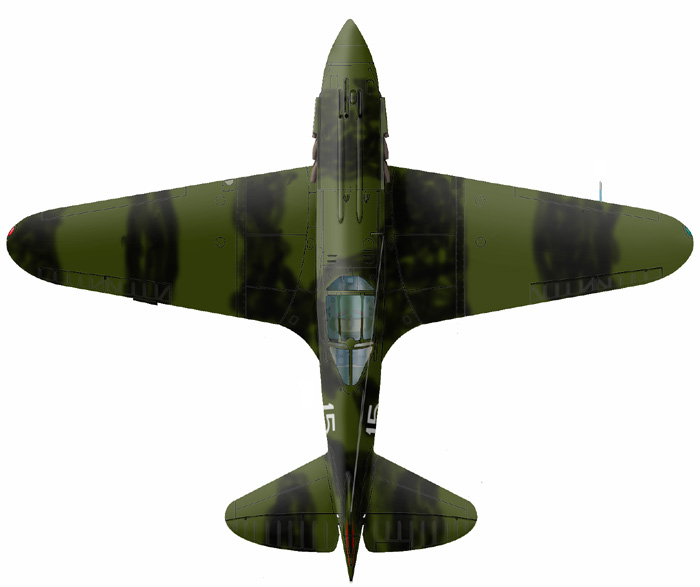
This plane is a late type MiG-3, just delivered in late July or August 1941, recognizable for the long blisters of the guns and of the exhaust tubes on the nose, for different elevators and other details.
Anyway the plane had some transitional characteristics: no triangular plates above and below the outlet flaps of the oil coolers, and probably the early type tail wheel doors with the cut for the wheel. We suppose that the plane already had the slats on the wing consoles.
The painting was an attempt to conform to the later standard, with black-green camouflage, red stars on the tail and under the wings; they were lacking on the fuselage, as in the first version of the ordinance of 22 June that didn't prescribe them; red stars on the fuselage were added again to the official standard a month later, in late July 1941.
The lack of uniformity of the black bands is noteworthy; probably the plane was delivered in AII green overall, as for prewar planes, and the black was hurriedly added on the field.
The photo seems to show a reflection of the inner part of the rear of the prop blades; this suggests that they were unpainted apart for the outer 3/4 of the rear face, that was painted black as for prewar standard.
Note the massive wearing of the paint on the wing fillets, that started to show the underlying shiny aluminum sheet.
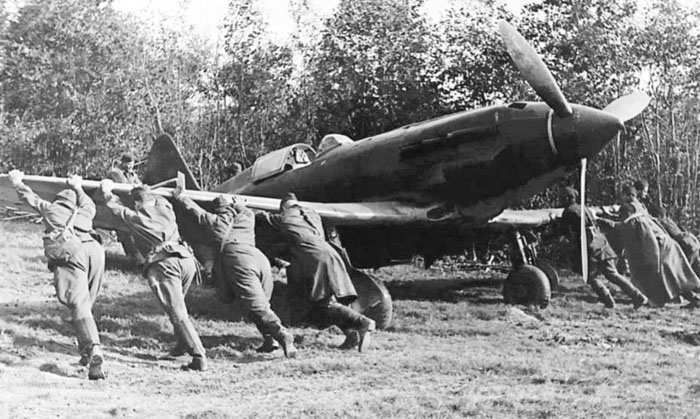
Right:
photo of late type MiG-3 of 401 IAP-ON; the position of the pitot probe suggests that it wasn't provided with slats on the wings; besides the radio mast was lacking.
The photo seems to show large red stars under the wings and on the fuselage sides, but it don't show clearly if the plane was camouflaged, if it had a star on the tail (as expected) or what and where were its numbers painted. The front of the propeller was painted with a dark color, probably black, already worn.
Image from https://warspot.ru/10007-tyazhyoloe-ispytanie-dlya-ispytateley